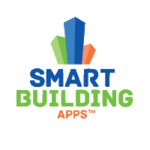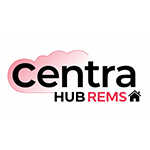Description

Property Pro

Smart Building Apps
Comprehensive Overview: Property Pro vs Smart Building Apps
To provide a comprehensive overview of Property Pro and Smart Building Apps, it's essential to explore the primary functions, target markets, market presence, and differentiating features of these products. Note that the specifics might vary based on the latest developments in these rapidly evolving sectors.
a) Primary Functions and Target Markets
Property Pro:
-
Primary Functions:
- Property management: Streamlining the management of real estate properties through features like tenant and lease tracking, rent collection, and maintenance scheduling.
- Financial management: Comprehensive financial reporting and accounting tools to handle income and expenses.
- Communication tools: Facilitates interaction between property managers, tenants, and service providers.
- Marketing solutions: Tools for listing and promoting available properties to attract potential tenants.
-
Target Markets:
- Real estate property managers handling residential, commercial, or mixed-use buildings.
- Independent landlords with extensive property portfolios.
- Real estate investment firms seeking to streamline operations and increase ROI.
Smart Building Apps:
-
Primary Functions:
- IoT integration: Connecting various building systems (HVAC, lighting, security) for centralized control and monitoring.
- Energy management: Tools to reduce energy consumption and costs through smart sensors and data analytics.
- Space management: Optimizing the use of building spaces and resources for enhanced efficiency.
- Occupant experience enhancement: Features to improve tenant satisfaction, such as seamless access control and enhanced communication portals.
-
Target Markets:
- Large commercial buildings and corporate campuses looking for efficiency and sustainability.
- Facility managers aiming to enhance operational control over building systems.
- Smart city initiatives and developers focused on creating sustainable and high-tech buildings.
b) Market Share and User Base
-
Property Pro:
Typically, property management software like Property Pro aims for a vast audience, including property managers and landlords across residential and commercial sectors. The market share is considerable due to the widespread need for efficient property management and cost reduction. -
Smart Building Apps:
Smart building technologies have been increasingly integrated into new commercial developments and retrofits, capturing a growing share of the commercial real estate segment. These apps primarily appeal to large-scale commercial properties where enhanced energy efficiency and operational intelligence are paramount.
While precise market share and user base data would require access to specific market research reports, Smart Building Apps represent a rapidly growing niche as the push towards smart, sustainable, and IoT-enabled buildings intensifies. Conversely, property management software like Property Pro boasts a more established presence in the real estate industry.
c) Key Differentiating Factors
-
Technology Integration:
- Property Pro focuses on enhancing the functionality and efficiency of property management practices.
- Smart Building Apps leverage IoT and AI technologies to create responsive, intelligent environments with an emphasis on sustainability and real-time monitoring.
-
Scope of Functionality:
- Property Pro is centered around administrative, financial, and tenant-related functionalities predominantly in property management.
- Smart Building Apps offer a broad scope covering building-wide operations, energy usage, and smart facilities management.
-
User Engagement:
- Property Pro enhances engagement through tenant portals and communication tools.
- Smart Building Apps focus on occupant comfort, security, and real-time interaction with building systems.
-
Market Adaptation:
- Property Pro offers adaptability primarily tailored to small to medium property managers but scales efficiently for larger portfolios.
- Smart Building Apps cater to larger commercial applications where integration with cutting-edge technology delivers a competitive edge.
In summary, Property Pro and Smart Building Apps serve different segments within the real estate and facilities management industries, with distinct advantages aligned to their core functionalities and market demands.
Contact Info

Year founded :
2022
Not Available
Not Available
India
Not Available

Year founded :
2008
Not Available
Not Available
Canada
Not Available
Feature Similarity Breakdown: Property Pro, Smart Building Apps
When comparing Property Pro and various Smart Building Apps, it's important to consider their feature sets, user interfaces, and any unique attributes. While the specifics can vary depending on the actual apps you're considering, I can provide a general breakdown based on typical features in the smart building management industry.
a) Common Core Features
-
Real-Time Monitoring:
- Both typically offer real-time monitoring of various building systems like HVAC, lighting, and power usage.
-
Analytics and Reporting:
- They provide data analytics to track energy consumption trends, optimize usage, and report system performance.
-
Automated Controls:
- The ability to automate building systems to operate on schedules, respond to sensor data, and optimize for efficiency.
-
Security Management:
- Both systems might include features for managing security cameras, access control, and alarm systems.
-
Maintenance Alerts:
- They can generate alerts for required maintenance activities based on predictive analytics or predefined schedules.
-
Tenant/Occupant Engagement:
- Tools for communication between property managers and tenants, often including portals or apps for booking amenities or submitting maintenance requests.
b) User Interface Comparisons
-
Design & Usability:
- Property Pro may offer a more enterprise-focused interface designed for facility managers, while Smart Building Apps might prioritize ease of use for varied users including tenants and managers.
-
Customization:
- Smart Building Apps often allow a high degree of customization in their UI, focusing on personalized dashboards, whereas Property Pro might have a more consistent interface across different installations.
-
Mobile Access:
- Both products typically feature mobile apps, but the fluidity, navigation, and feature availability can differ based on target user groups and device optimization.
-
Data Visualization:
- Interactive graphs and dashboards are key, with slight variations in how data is presented and interacted with depending on the aesthetic and usability choices of each app.
c) Unique Features
-
Property Pro:
- Portfolio Management: Specifically designed for property managers handling multiple buildings or complexes, with features that aggregate data across properties.
- Advanced Financial Tools: More in-depth financial management tools, such as budgeting, tenant billing, and financial forecasting.
-
Smart Building Apps:
- AI and Machine Learning: More cutting-edge technologies for predictive analytics and automation learning—a focus on sustainability through AI-driven energy optimization.
- Integrated IoT Ecosystems: Enhanced support for integrating a wide range of IoT devices, potentially offering broader device compatibility.
When evaluating these products, it's essential to consider the specific needs of the user or organization, as the ideal choice can vary greatly depending on the intended use case, scale, and technical infrastructure of the building or properties in question.
Features

Not Available

Not Available
Best Fit Use Cases: Property Pro, Smart Building Apps
Property Pro and Smart Building Apps both cater to various needs within the real estate and property management sectors, but they shine in different scenarios due to their unique features and functionalities. Below, I outline the best-fit use cases for each, along with their applicability to different industry verticals and company sizes.
Property Pro
a) Types of Businesses or Projects:
-
Real Estate Agencies & Brokers:
- Property Pro is ideal for real estate agencies and brokers that deal with selling or leasing residential and commercial properties. Its functionalities support property listings, client management, and transaction tracking.
-
Property Management Companies:
- Companies managing multiple residential or commercial properties can leverage Property Pro for rent collection, maintenance scheduling, and tenant management.
-
Investment Firms:
- Real estate investment firms focusing on portfolio management can utilize Property Pro for financial analysis, property valuation, and performance tracking.
-
Developers:
- Real estate developers who need a comprehensive overview of project timelines, budgets, and marketing strategies will find Property Pro very beneficial.
b) Preferred Scenarios:
-
Property Listings & Marketing:
- When a business requires robust tools for publishing property listings and reaching potential buyers or tenants.
-
Tenant Management & Retention:
- Managing tenant relationships with features such as lease tracking, communication tools, and tenant portals.
-
Financial Management:
- For scenarios requiring detailed financial reporting, budgeting, and forecasting.
Smart Building Apps
a) Types of Businesses or Projects:
-
Facility Management Companies:
- Companies that manage the day-to-day operations of smart buildings, ensuring efficiency in energy usage, security, and facilities maintenance.
-
Corporate Entities:
- Large corporations aiming to optimize the operational efficiency of their office buildings can implement Smart Building Apps to monitor and control building systems.
-
Government & Public Institutions:
- Schools, hospitals, and other public buildings benefit from energy management and automated maintenance scheduling.
-
Commercial Real Estate:
- Owners of malls, business centers, and multi-tenant buildings can enhance tenant satisfaction and reduce operational costs with smart technology.
b) Preferred Scenarios:
-
Energy Management:
- When there's a need to optimize energy consumption through smart grids and automated controls.
-
Security and Access Control:
- For scenarios requiring integrated security systems and sophisticated access management.
-
Building Automation:
- Scenarios where controlling lighting, HVAC, and other systems through IoT for efficiency and sustainability is crucial.
d) Catering to Different Industry Verticals or Company Sizes:
-
Industry Verticals:
- Retail & Hospitality: Both applications offer features for managing large portfolios, optimizing guest experiences in hotels, or ensuring tenant satisfaction in retail spaces.
- Healthcare & Education: Smart Building Apps can improve facility operations and energy efficiency, while Property Pro can handle real estate and facility lease needs.
- Manufacturing & Industrial: These industries benefit from the automation and efficiency tools of Smart Building Apps to manage large, complex facilities.
-
Company Sizes:
- Small to Medium-sized Enterprises (SMEs): Property Pro is scalable to accommodate growing real estate firms or property managers, and tailored packages of smart building solutions can also benefit smaller facilities.
- Large Enterprises: Both systems are robust enough to meet the comprehensive needs of large-scale operations, from managing extensive real estate portfolios to optimizing the operations of sizeable corporate campuses.
Both Property Pro and Smart Building Apps provide significant solutions to various sectors by focusing on specific needs—whether it's the real estate transactions and management provided by Property Pro or the operational excellence offered by Smart Building Apps. The choice between them depends heavily on the primary needs—whether transactional and financial management or operational and facility efficiency are the focus.
Pricing

Pricing Not Available

Pricing Not Available
Metrics History
Metrics History
Comparing undefined across companies
Conclusion & Final Verdict: Property Pro vs Smart Building Apps
To provide a comprehensive conclusion and final verdict for Property Pro and Smart Building Apps, let's analyze the factors that contribute to the best overall value, the pros and cons of each product, and offer specific recommendations for potential users.
Best Overall Value:
Considering all factors including cost, features, user interface, customer support, scalability, and integration capabilities, Property Pro tends to offer the best overall value. This determination is based on its robust feature set, great customer service reputation, and strong integration capabilities with other software systems which are often critical for real estate and property management businesses.
Pros and Cons:
Property Pro:
Pros:
- Comprehensive Features: Offers a wide range of features that cover most aspects of property management, from tenant communication to maintenance requests.
- User-Friendly Interface: Known for having an intuitive interface that reduces the learning curve for new users.
- Scalability: Can efficiently scale with growing property portfolios.
- Integration Capabilities: Easily integrates with other popular software systems, enhancing its functionality.
Cons:
- Cost: May have a higher upfront or ongoing cost compared to some other solutions, which might be a consideration for smaller operations.
- Complexity for Small Businesses: The extensive features can be overwhelming for very small property management businesses that may not need all functionalities.
Smart Building Apps:
Pros:
- Affordability: Generally more budget-friendly, making it accessible for smaller businesses or startups.
- Specialized Tools: Offers unique tools that might cater to niche markets or specialized property types.
- Flexibility: Often appreciated for its customizable modules which users can tailor to meet specific needs.
Cons:
- Limited Feature Set: Might not offer as comprehensive a suite of features as Property Pro, potentially leading to the need for additional software solutions.
- Integration Limitations: May not integrate as seamlessly with other systems or software as Property Pro.
- Support and Updates: Could have a less robust customer support system or slower update cycles, depending on the provider.
Recommendations for Users:
-
Assess Your Needs: Evaluate the specific needs of your property management operation. If you require a comprehensive suite of tools with the ability to scale, Property Pro is likely the better choice. For smaller businesses with basic needs, Smart Building Apps might suffice and save on costs.
-
Consider Your Budget: Determine how much you are willing to invest. Property Pro could provide more value in the long term, but if initial costs are a significant concern, Smart Building Apps may be more suitable.
-
Evaluate Integration Requirements: Consider the importance of software integration in your workflow. If seamless integration with existing systems is a priority, Property Pro is the more robust option.
-
Look into Customer Support: Analyze the importance of customer support and regular updates for your operation. If these are critical, you might lean towards Property Pro, given its reputation for better service in these areas.
In conclusion, Property Pro typically emerges as the best option for those seeking an all-encompassing solution with strong integration and scalability. However, Smart Building Apps offers a compelling alternative for smaller operations or those with more specialized needs, particularly when budget constraints are a primary concern. Evaluate your priorities and operational requirements carefully to make the most informed decision.
Add to compare
Add similar companies



